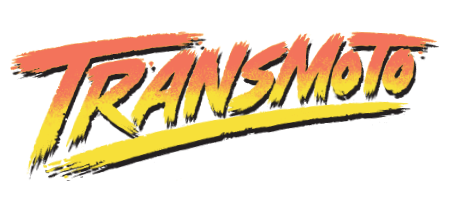
Why is it that dirt bike manufacturers have so many resources at their disposal, yet leave so many brilliant designs and practical parts to the aftermarket boys? Are these ‘missing’ parts on their production bikes oversights, or the consequence of trying to keep production costs down?
It’s true that, by around 2010, most manufacturers finally began fitting quality handlebars, decent protective parts, easy-access airboxes, alloy sidestands and hour metres to their production bikes. But what about the rest of the bits only found in aftermarket catalogues; the bits that can cost owners a bomb the second they get a new bike home from the dealership?
Here are our top 10 most puzzling manufacturer parts and/or design oversights…
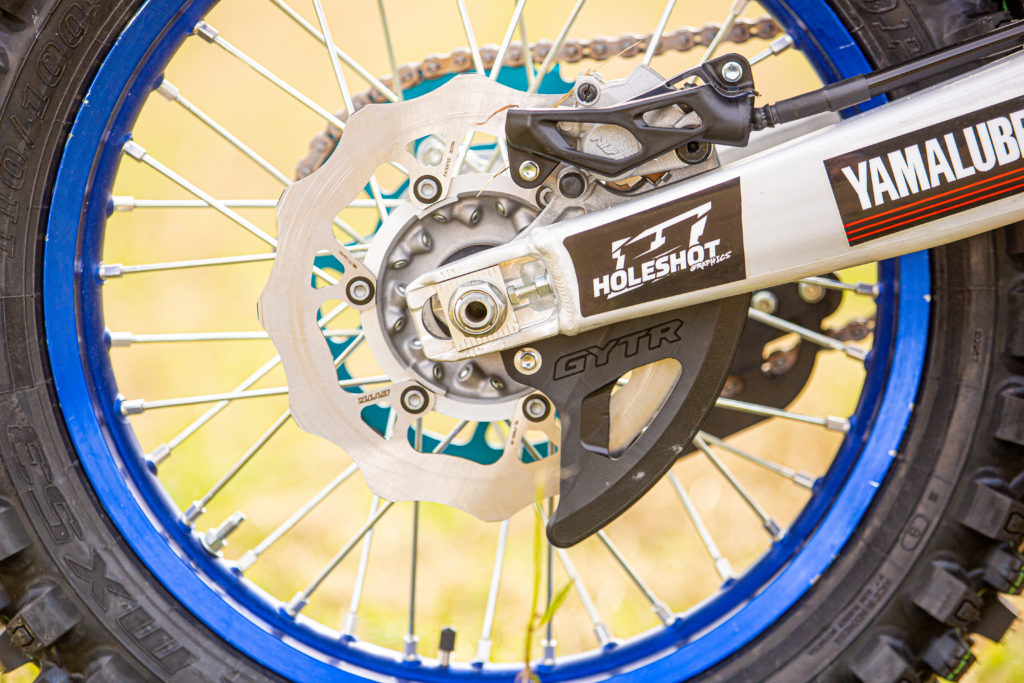
1. SOLID BRAKE DISCS
Pretty much every top-shelf enduro rider around the world runs a solid rear brake disc (and many do the same with their front disc, too). And yet all the manufacturers (except for Husqvarna, back in around 2009) still insist on fitting elaborate holed discs for their trail, enduro and motocross production bikes. But why? Solid rear discs create better modulation and feel, plus they don’t grind brake pads out nearly as quick. Solid discs also allow you to run organic pads, which generate less heat, so they help reduce the problems many riders have with boiling their rear brake fluid. The manufacturers may be trying to reduce unsprung weight by fitting fancy-looking holed discs, but if Pro riders think any benefits are far outweighed by the loss of brake feel, accelerated pad wear and boiling fluid issues, why would the manufacturers persist with the product that actually adds to a bike’s production costs? Doesn’t make a lot of sense to us.
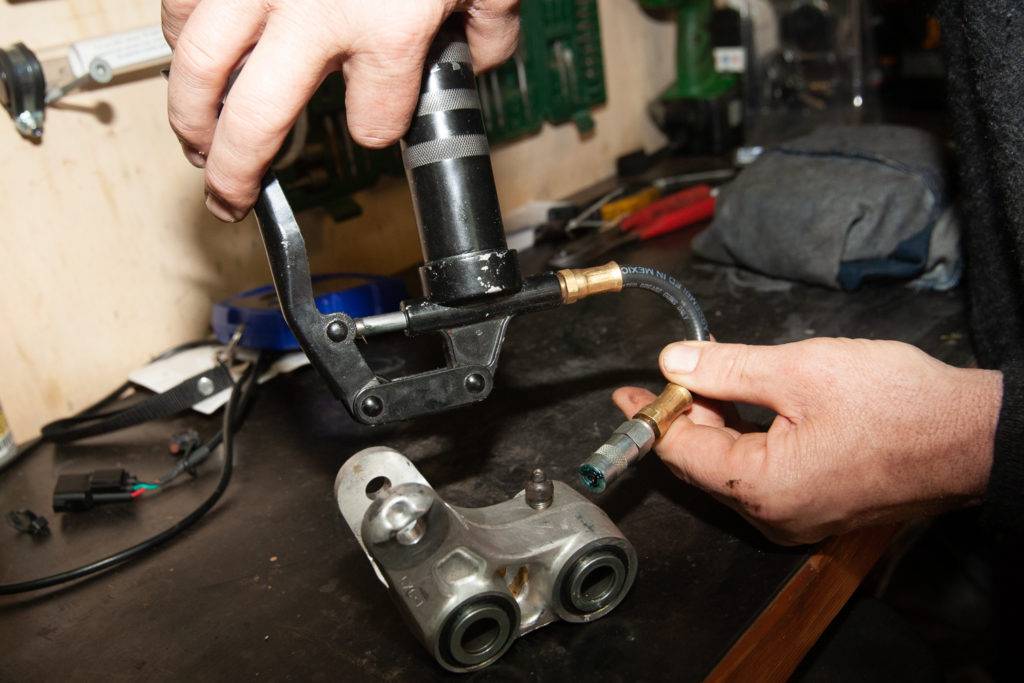
2. GREASE NIPPLES
The bearings in your bike’s linkage, swingarm pivot and steering head all require frequent checking and re-greasing, so why not simply add a grease nipple to these areas? Linkage bearings are exposed to the elements and most in need of re-greasing, while steering head bearings tend to collect water from pressure washing and frequently lose proper lubrication. Just ask an XR400 owner how often he’s seized the swingarm pivot bolt and what it’s cost him to get the nightmare fixed. It’s a chronic problem for the XR and not uncommon for punters to wreck their frames while trying to remove the things! Not only are grease nipples lightweight; they can also save hours on the tools. Consider, for example, how long it takes to remove your triple clamps, drop your steering stem out and then punch the bearings out. And if you don’t have the tools, a DIY job suddenly turns into a costly trip to the workshop.
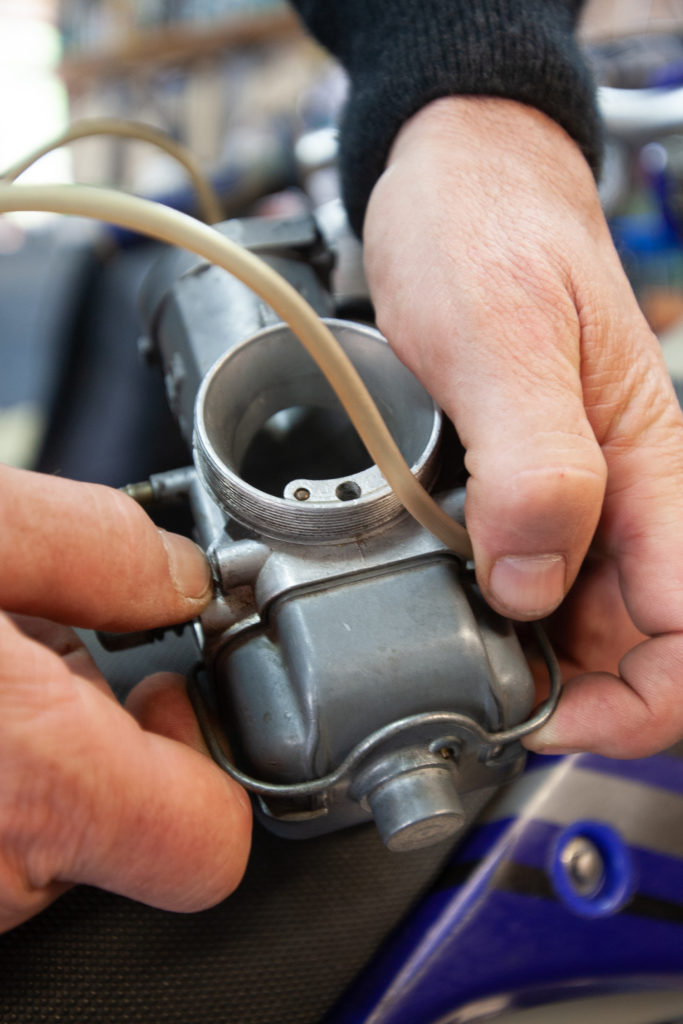
3. FLOAT BOWL CLIP
Up until about the mid 1980s, most dirt bike carbs ran a U-shaped spring-clip to secure the float bowl to the carb body (the pictured unit is off an infamous 1981 Maico 490). The clip can be removed by hand in seconds – with the carb in or out of the bike – making access to the float bowl incredibly easy. The things were simple, practical and totally reliable. Best of all, they allowed you to clear water out of the bowl after a creek-crossing mishap in seconds, and made access to jets fantastically easy. Particularly with the new-generation perimeter frames making carb access more and more difficult, this arrangement makes perfect sense. But a dirt bike hasn’t appeared with a float bowl clip in more than 20 years. Just because it’s almost criminally simple doesn’t mean it doesn’t still work a treat.
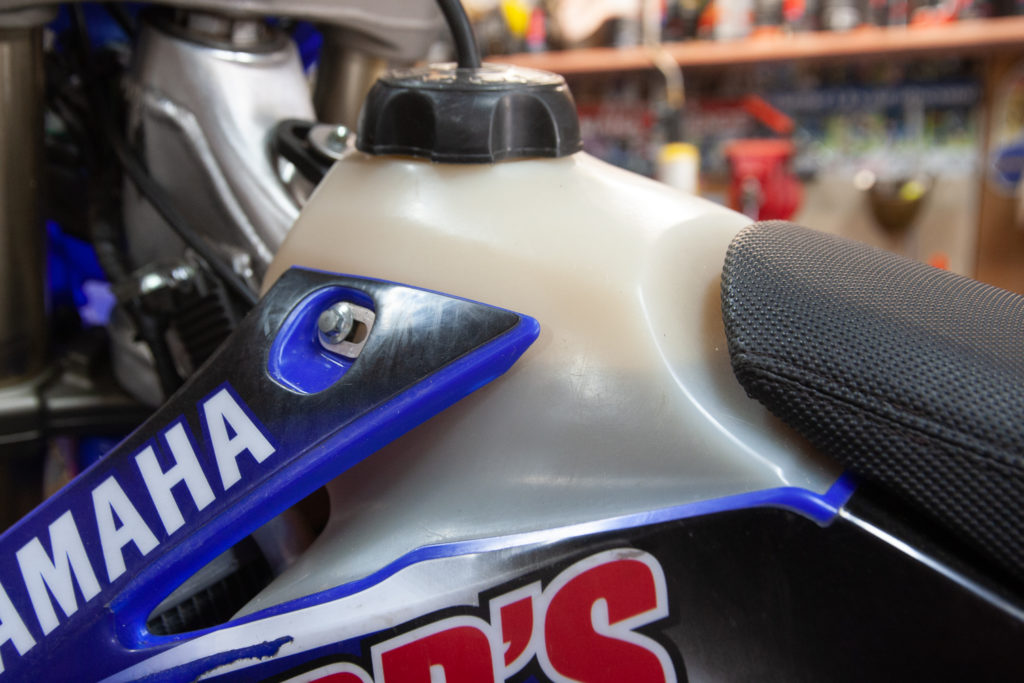
4. CLEAR/TRANSLUCENT FUEL TANKS
European manufacturers, TM and KTM, both trialled clear fuel tanks on various production models from 2000 to 2009. Okay, we all understand that clear tanks get that yellow tinge over time, but does that really offset the obvious benefits in being able to identify your fuel level at a glance? KTM finally committed to clear tanks from their new-generation 2012 enduro model-range onwards, and pretty much all other European brands have adapted them at some point since. But what are the Japanese manufacturers thinking? Or not? For racers (who can work out how much fuel their bike requires for various conditions and mark the side of the tank accordingly), it prevents putting in too much fuel for a short enduro sprint lap. It might only save 2-3kg, but when you consider the ridiculous sums of money regularly spent on shaving 2-3kg off race bikes, clear tanks can pay for themselves several times over.
A clear tank also lets you know at a glance whether you have enough to make another lap of a cross-country loop before needing to take on more fuel. And for any pit helper who’s tried to quickly fuel a bike with a dark plastic tank and inadvertently treated the rider’s cods to a stinging dose of overflowing fossil fuel, the clear tank is a welcome saviour! Given that clear, translucent or ‘neutral-coloured’ tanks are no more expensive to produce than ‘conventional’ solid-coloured plastics tanks, surely this is a simple case of style over substance; pretty over practical.
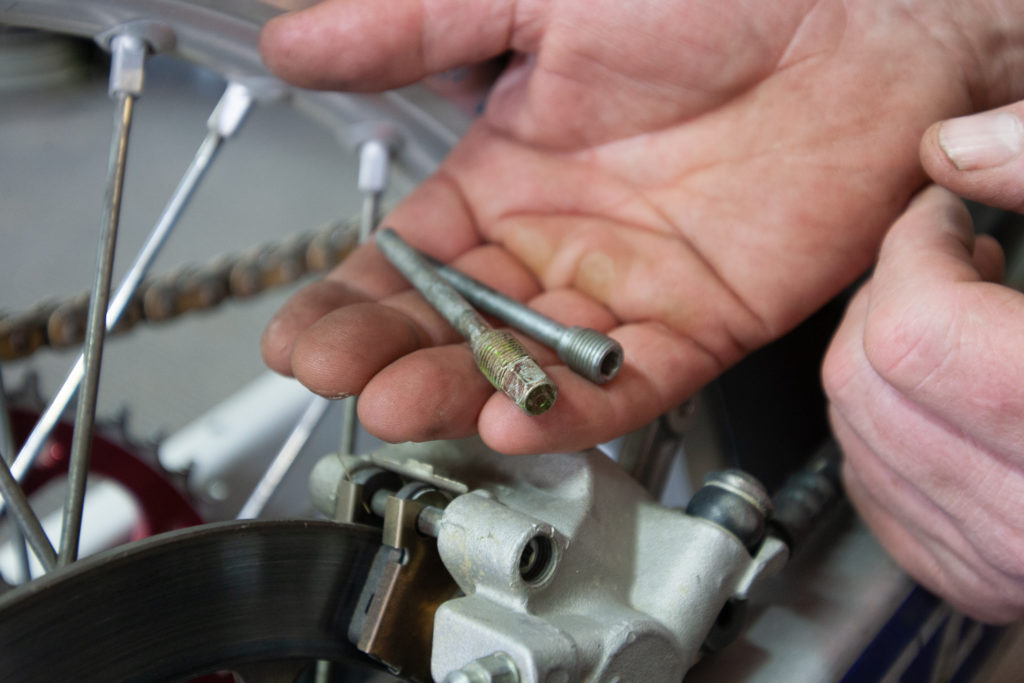
5. REAR BRAKE RETAINING PINS
Rear brake discs first arrived on dirt bikes way back in 1987. But now, more than 30 years on, many manufacturers remain inexplicably insistent on using rear brake retaining pins with an Allen-key head, and then hiding them behind silly little grub screws. As owners often lose the grub screws, mud is allowed to get in and clog the pin’s head, which greatly increases the chances a ham-fisted owner will round out the Allen-head. In which case, the pin is going nowhere fast (an issue exacerbated by the fact rear brake callipers tend to get very hot, so the pins simply seize in the calliper). In either case, removing the pin becomes a pain in the arse. If the pin can’t be removed and the brake pads can’t be changed, you could end up with scored brake discs. Expensive! Or if owners get persistent and try to drill the seized retaining pins out, they can actually wreck their calliper altogether – a hack-job that can cost them a bomb to set right.
Yes, there are exceptions here. Honda has used hex-head retaining pics for many years, while most Euro brands with Brembo stoppers have long since got around the issue by running retaining pins held in place by split-pins. But why must we still tolerate the problem with most Japanese brands? The silly thing is, hex-head pins are actually cheaper to produce than what they’d be replacing, and an aftermarket hex-head pin costs just $12.
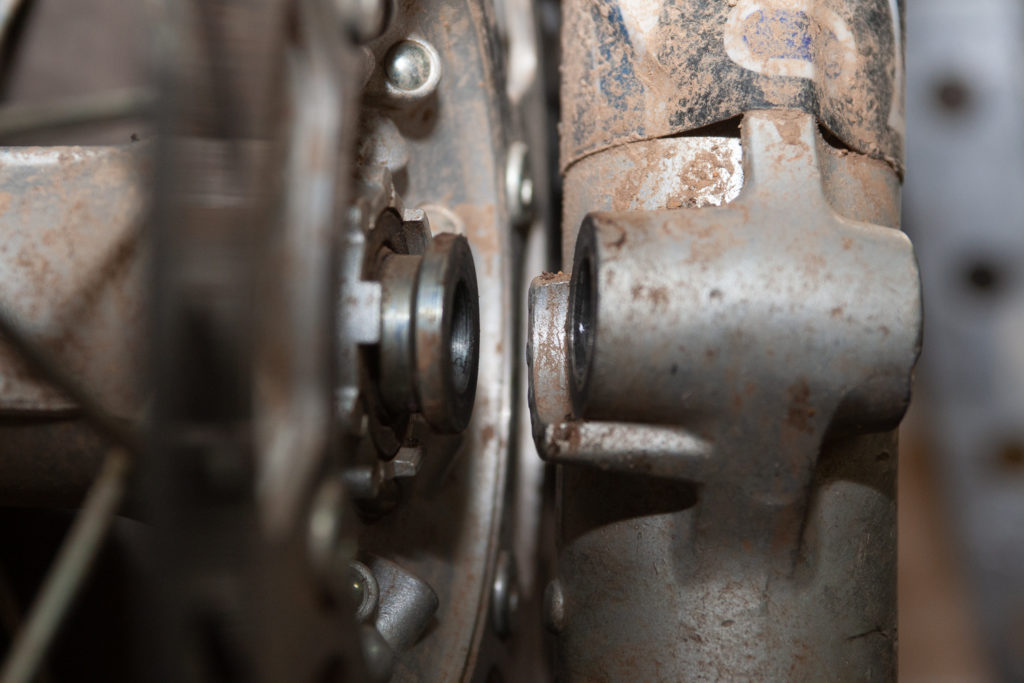
6. FRONT WHEEL HOLDER
Anyone who’s owned a Yamaha TT250R will know what a great idea this small lip on the inside of the left fork leg is. Given that the TT-R’s wheel spacer is pressed into the bearing and stays put during wheel changes, it makes re-fitting the front wheel a piece of cake. The cupped lip or recess in the boot of the fork leg holds the front wheel in exactly the right position. There are no fiddly spacers falling out, and no having to dump the front wheel on the ground again while you go grab the axle you left on the bench; it all sits there perfectly in place, ready for you to insert the greased axle when you’re good and ready. It makes front wheel changes so much easier than on any other bike, and it’s hard to understand why this brilliant idea has taken more than 20 years not to be replicated by anyone else. Even Yamaha hasn’t copied themselves for other models.
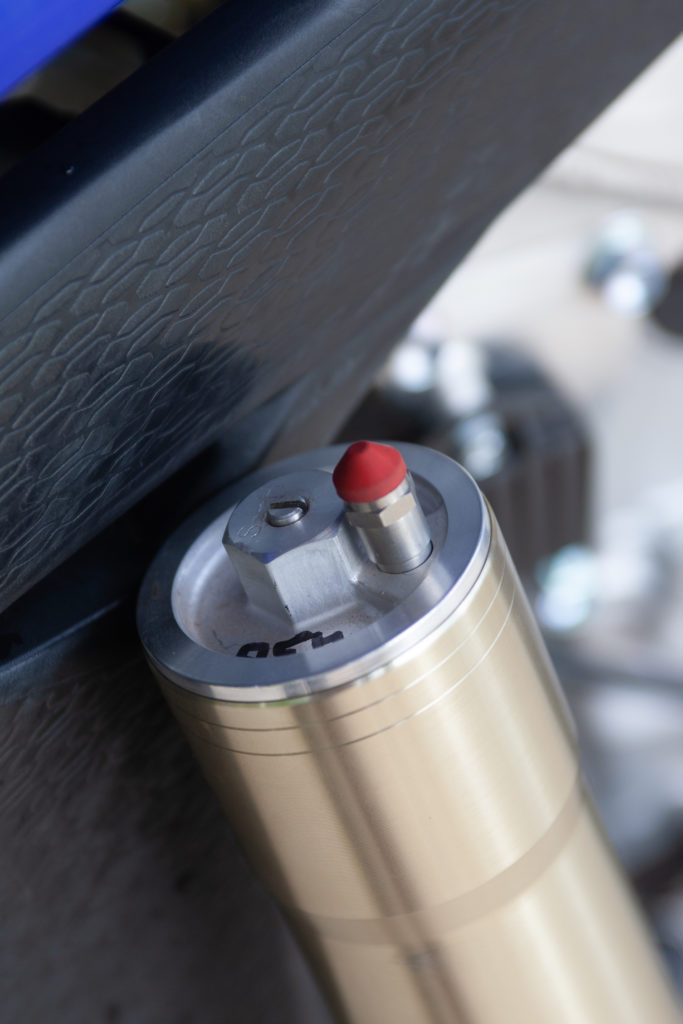
7. FORK BLEEDER
Smart operators will twist their fork legs in the triple clamps to optimise access to the air bleed screws in the fork caps, but these screws are still awkward to get at, and time-consuming to unscrew. They can also easily fall out and get lost in the mud. And when the fork is pumping its oil all over you, it’s not a good look! Given the small chamber of air in each fork leg, fork performance is significantly affected by changes in either oil height or a build-up of air pressure. So why dick around with a screwdriver when a quick flick of your finger on a fork bleeder will sort you in seconds and make regular venting to the atmosphere a piece of piss? A pair of aftermarket quick bleeders will cost you about $30. Meanwhile, OEM air bleed screws are sometimes impossible to buy independently. So if you lose one, you have to buy the whole bloody fork cap.
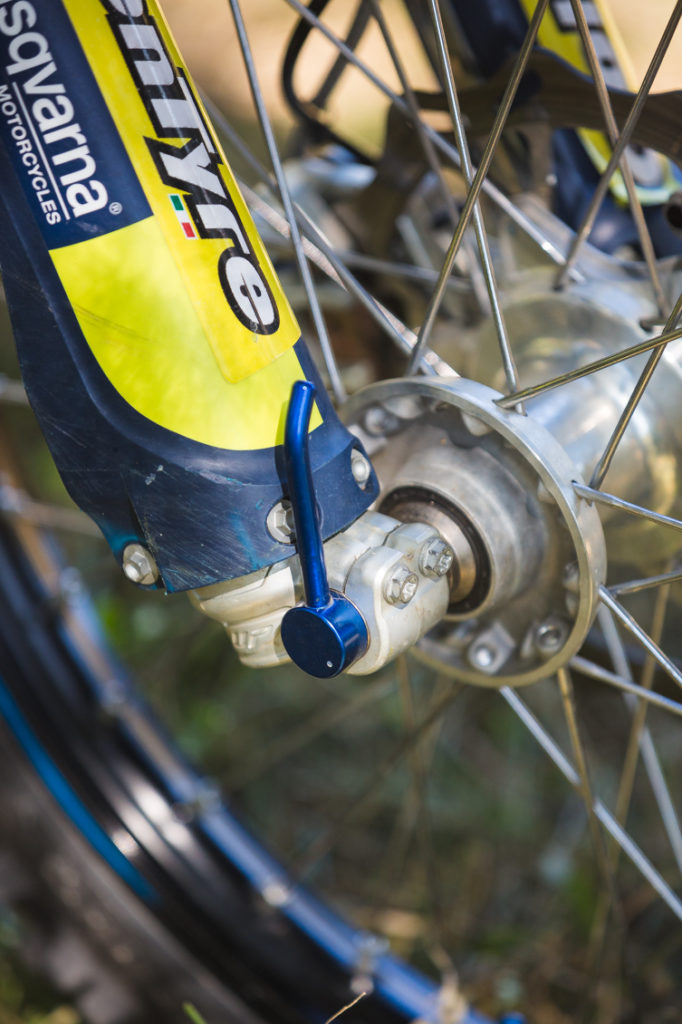
8. AXLE PULLERS
Despite motorcycle testers and Pro riders questioning the lack of axle pullers on production dirt bikes for years (especially for hardnosed enduro bikes, where tyre changes are a matter of importance), why don’t they come standard on every trail or enduro bike? Okay, there’s was a time 10 years back where Husqvarna ran pullers as standard equipment, but they were the only manufacturer to do so, and no brand (Husky included) sees fit to give owners this practical item these days. Since every trailrider and enduro racer with half an idea fits axle pullers before he heads out on a decent ride, it’s astonishing that the manufacturers don’t give them what they want on the production machine. Is the benefit of an axle puller really outweighed by the costs they add to produce the bike?
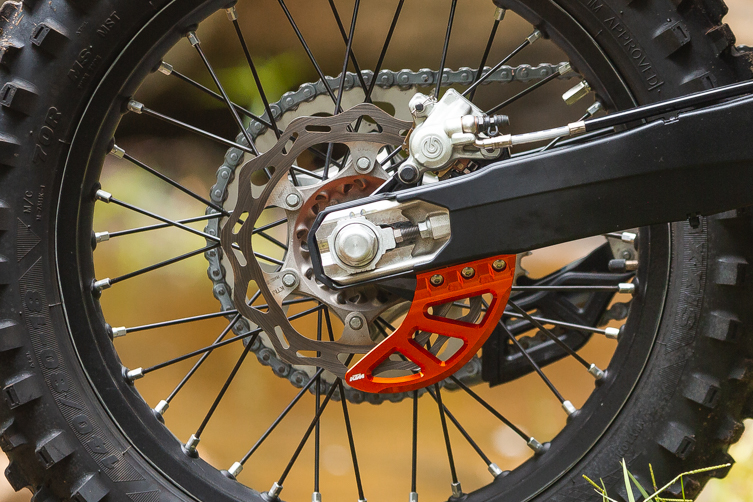
9. OFFSET CHAIN-ADJUSTER BLOCKS
Who would have thought that adding a little metal to one side of an axle block and making it reversible could make adding or subtracting two teeth on the rear sprocket so bloody easy? When KTM introduced their asymmetrical chain-adjuster blocks in 1997, it was a stroke of genius. Not only did it make gearing changes much quicker and easier – as you no longer had to add or remove chain links when fitting a different-sized sprocket – but it also meant way less stress on the chain adjuster bolts. They allow you to run a long wheelbase without having to wind the adjuster bolts way out, or a short wheelbase without having to wind them way in. It is an incredibly simple solution that, surprising, has only been adopted by a few European brands in the years since.
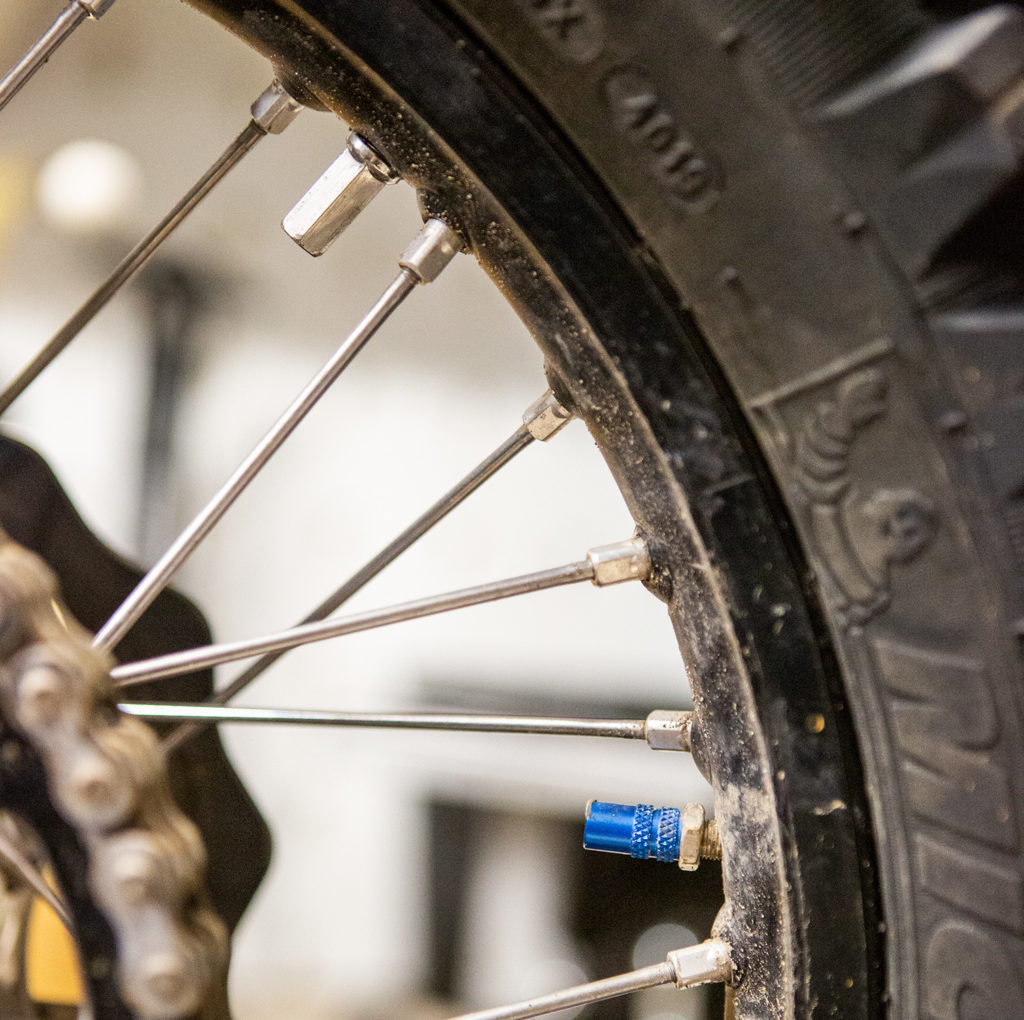
10. RIMLOCK POSITION (& NUTS)
Why do we all accept the fact that virtually all production dirt bikes come with the rimlock placed opposite the valve stem, and then immediately relocate it to make tyre changes a thousand times easier? Why can’t manufacturers do it for us (or at least drill an additional hole to accommodate it)? Okay, for adventure-style off-road bikes that spend more time at higher speeds, the opposed rimlock is about creating better wheel balance, but not for trail, enduro, or motocross bikes. The exception to the rule is Yamaha who, for several years now, has had two rimlock holes machined into their rear wheels – meaning you don’t have to drill a hole in your rim closer to the valve stem. You simply swap the position of both the rimlock and rubber plug. While we’re talking rimlocks, why don’t manufacturers all follow KTM’s lead by fitting elongated rimlock nuts? By covering the entire rimlock thread, they stop mud clogging up the thread and this saves time during tyre changes.
